1913-D Type I Two Feathers FS-401 38429
I found this coin on Ebay in an NGC MS63 slab. I broke it out of the slab and submitted it raw to PCGS. It came back MS64 and attributed as a Two Feather variety.
The 1913-d T1 Two Feather is not a “pure” 2F. On examples I’ve seen, the feather is mostly but not entirely missing. Sometimes you have to tilt the coin just right to see the “island” of still raised metal. Sometimes at a specific angle you can even see the outline of a somewhat reduced third feather. However, on a Two Feather the third feather is always greatly diminished and no longer resembles the original third feather. Of course, whether a 1913-D qualifies as a Two Feather variety or not is a judgment call, just like any attribution or grade.
…..
At high magnification you can see traces of the original feather as well as the island of material left behind. You also can see beveling slightly below the third feather and the remnants of the die clash (indicated by dashed line and arrow).
…..
Obverse Clues
The 1913-D 2F has a wealth of clues to look for. The die clash may have been particularly violent. There is a die crack from the rim at 10:00 to just below the feather tie point. There are rough spots near the rim from 7:00 to 10:00. These likely were caused by debris from the clash.
 The dies also clashed in the throat and neck area. They were abraded resulting in an indistinct throat and neck area. These are sometimes called a “broken” throat and neck.
The dies also clashed in the throat and neck area. They were abraded resulting in an indistinct throat and neck area. These are sometimes called a “broken” throat and neck.
The clash marks likely were abraded with a relatively fine tool. The abraded areas are fairly smooth with few sharp or strong abrasion marks visible. This is not always the case for some other dates.
…..
Reverse Clues
The reverse is slightly rotated with respect to the obverse (see full coin images). The D mint mark is well-positioned, properly oriented, and filled.
…..
What to look for
As with most 2F varieties, the near missing feather is the feature to look for. The filled D on the reverse also is easy to detect in Web images making for a nice confirming clue.
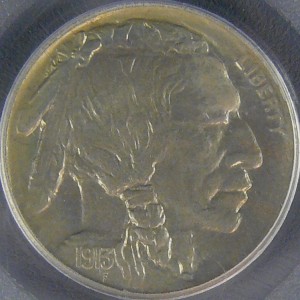

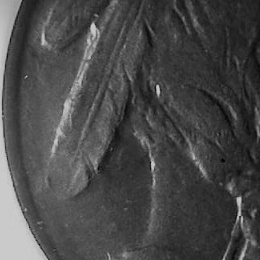
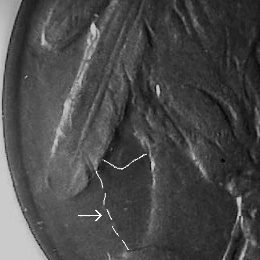
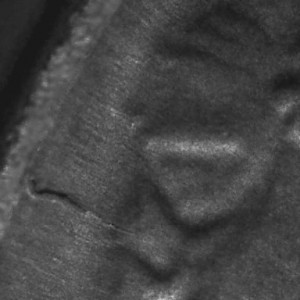
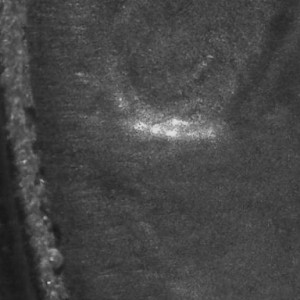

Leave a Reply
You must be logged in to post a comment.